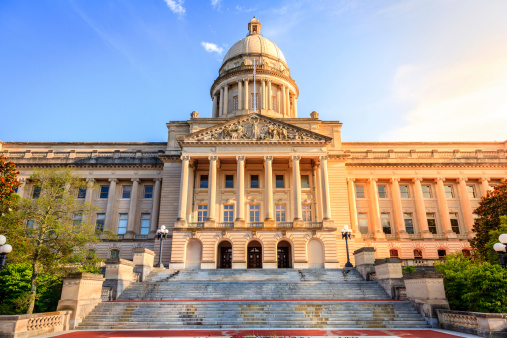
By understanding key tradeoffs, federal agencies can enhance state participation in the regulatory process.
The idea that federal agencies should listen to states is very popular. The federal government is eager to say that it is working with the states when it regulates, and scholars of “administrative federalism” seek ways to give states a more meaningful role in agency policymaking.
However, as I explain in greater depth in a recent article, state involvement in the federal regulatory process is more complicated than it first appears. States, like other interests, have organized themselves into interest groups, and this organizational form creates certain costs – and certain tradeoffs for the values underlying administrative federalism. In this essay, I will briefly recount those costs and tradeoffs, and then (prompted in part by thoughtful reviews of my article here and here) say a bit more about potential reforms.
To get a sense of the tradeoffs, we first have to disaggregate three goals of administrative federalism. When scholars talk about protecting federalism in the agency context, they often talk about the prominent federalism goal of protecting state power – that is, of protecting states as institutions. But they also frequently talk about the need to enhance agency expertise through information from states’ varied experiences, as well as the virtue of maintaining (or even improving) agencies’ democratic accountability by bringing in voices representing a public constituency. These three objectives – protecting states, enhancing information, and improving accountability – are not the same, and they are often in tension: the mechanism that best advances state power often disserves the expertise and accountability goals.
Why does that tradeoff occur? The organizations that consistently advocate for state power are state interest groups – the myriad associations of state officials that lobby the federal government, advancing the “state” view. Examples range from “generalist” groups like the National Governors Association to specialized groups like the Groundwater Protection Council, an organization of state ground water regulatory agencies. These groups thrive as champions of state power in large part because they unite state officials around their common interests, primarily institutional concerns, and because they are insulated from political winds that might otherwise displace their institutional focus. Yet by cohering states around uniform positions acceptable to all of their state members, state interest groups tend to bleach out states’ diversity rather than conveying states’ varied knowledge and experiences. They therefore do not enhance agency expertise in the way that praise for administrative federalism imagines.
These groups create a similar tradeoff with respect to accountability. The features that facilitate state interest groups’ state-power focus – namely, their unified positions and insulation from public scrutiny – also limit their capacity to be a voice for state constituents. The “state” view the groups advance may not actually have much correlation to that of state constituents. Moreover, there are limits on the groups’ ability to represent state officials themselves. Some groups purport to speak on behalf of “the states” when in fact they only have a subset of states as their members, and many groups take some positions without consulting their entire membership, without reporting dissent, or by counting only a plurality of members’ views.
So what should be done about the tradeoffs embedded in state interest group participation in federal administration? One possibility, of course, is nothing. Perhaps hearing from states imperfectly is better than hearing only from their private counterparts, and perhaps the costs of state interest groups are simply part of doing business in an interest-group world. Surely some expertise and some accountability will come from other voices in the rulemaking process.
Yet reforms are worth making if they correct a net bad or if they achieve gains at low cost. In my recent article, I discuss a variety of options. Here, let me highlight potential solutions to address two of the status quo’s most important shortcomings.
First, before federal regulators give special treatment to groups that fly the banner of federalism (a practice I describe in the article), they ought to require some proof that the groups actually represent states and an indication of the extent to which they do so. One way to do this would be to establish guidelines to help agencies sort among different state interest groups. Specifically, the Office of Management and Budget’s (OMB) guidance on federalism should be revised to instruct agencies to give priority to state interest groups that disclose their members, funding, and the extent of support for a particular position. The OMB guidance should caution agencies about giving deference to a “state” position when it turns out to be the product of only a plurality of states, when a “state” interest group principally advances private interests, or when there is other evidence that states’ views are deeply divided. (An agency might, of course, still adhere to any suggestions it finds independently advisable.)
Second, the special consultations that federal regulators often hold with state interest groups ought to afford opportunities for agencies to learn from the diversity of states’ knowledge and experience. That is a substantial reason for prioritizing these consultations; the justification for them wanes if they offer only generic, state-power talking points. True, other voices in the process can provide some of the information that state interest groups do not, but states themselves will sometimes be the best sources of information relevant to the implementation of federal regulation. To the extent that state interest groups do not convey individualized expertise, agencies should be instructed to reach out further and contact states on an individual basis. There is precedent for this type of outreach in recent efforts by the U.S. Department of Health and Human Services, the U.S. Environmental Protection Agency, and other agencies.
This essay and my recent article seek to highlight the subtle costs and tradeoffs of state interest groups that sometimes get lost in the praise for administrative federalism. State interest groups are an important and underappreciated feature of the administrative law universe, and their characteristics illuminate complexity behind the federalism label.




